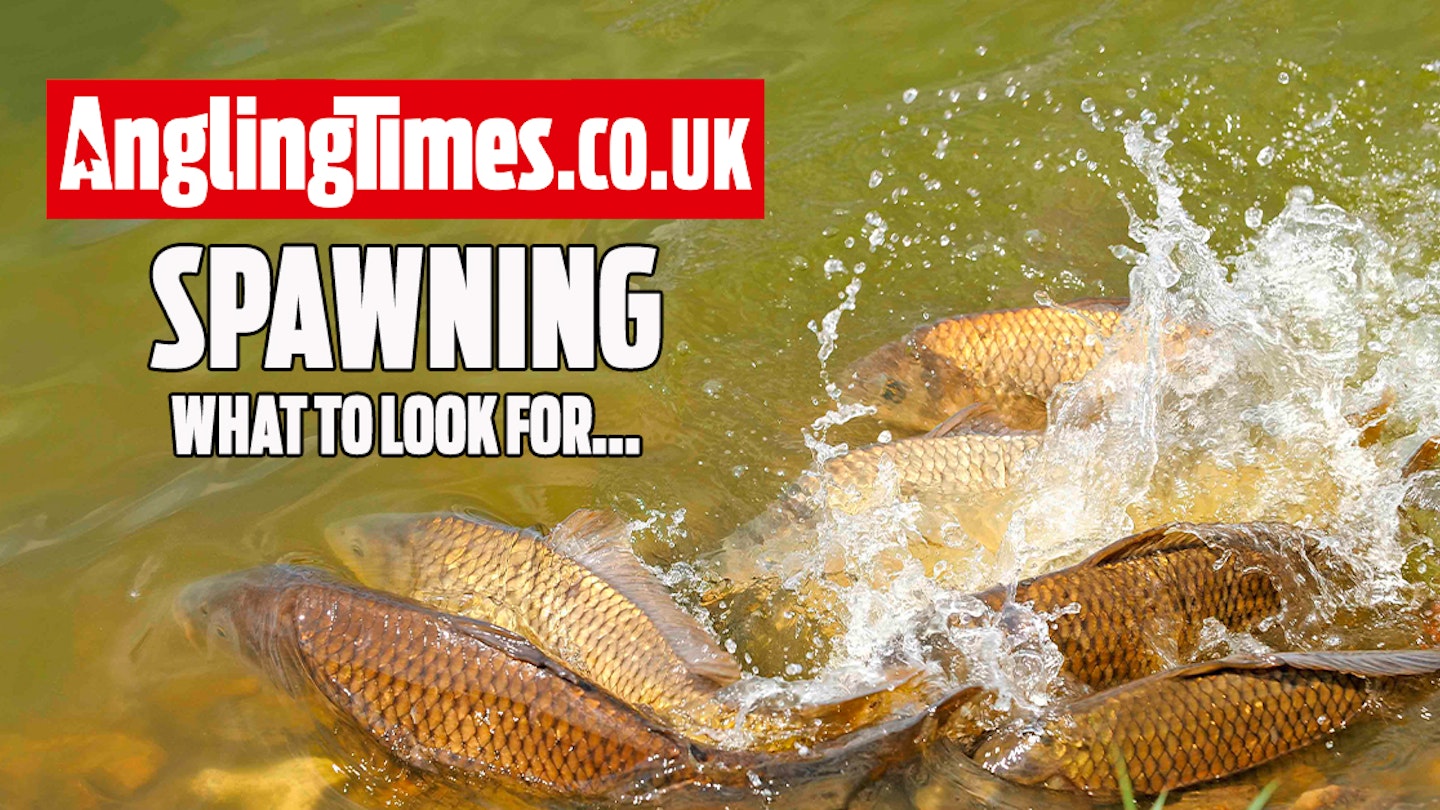It is that time of year when the warm temperatures will be causing our most popular coarse species to start spawning. This will result in many fisheries closing to let the fish get this stressful process out of the way in peace.
Fishing for spawning fish is not only frowned upon, it is actually not that productive, as the last thing the fish will have on their mind during this period is food.
If you are thinking fish are beginning to spawn on your lake, the best thing to do, is move away from the area entirely, change your target species and let the lake owner know - so they can make plans to protect their stock.
Here are a few signs the fish may soon be spawning…
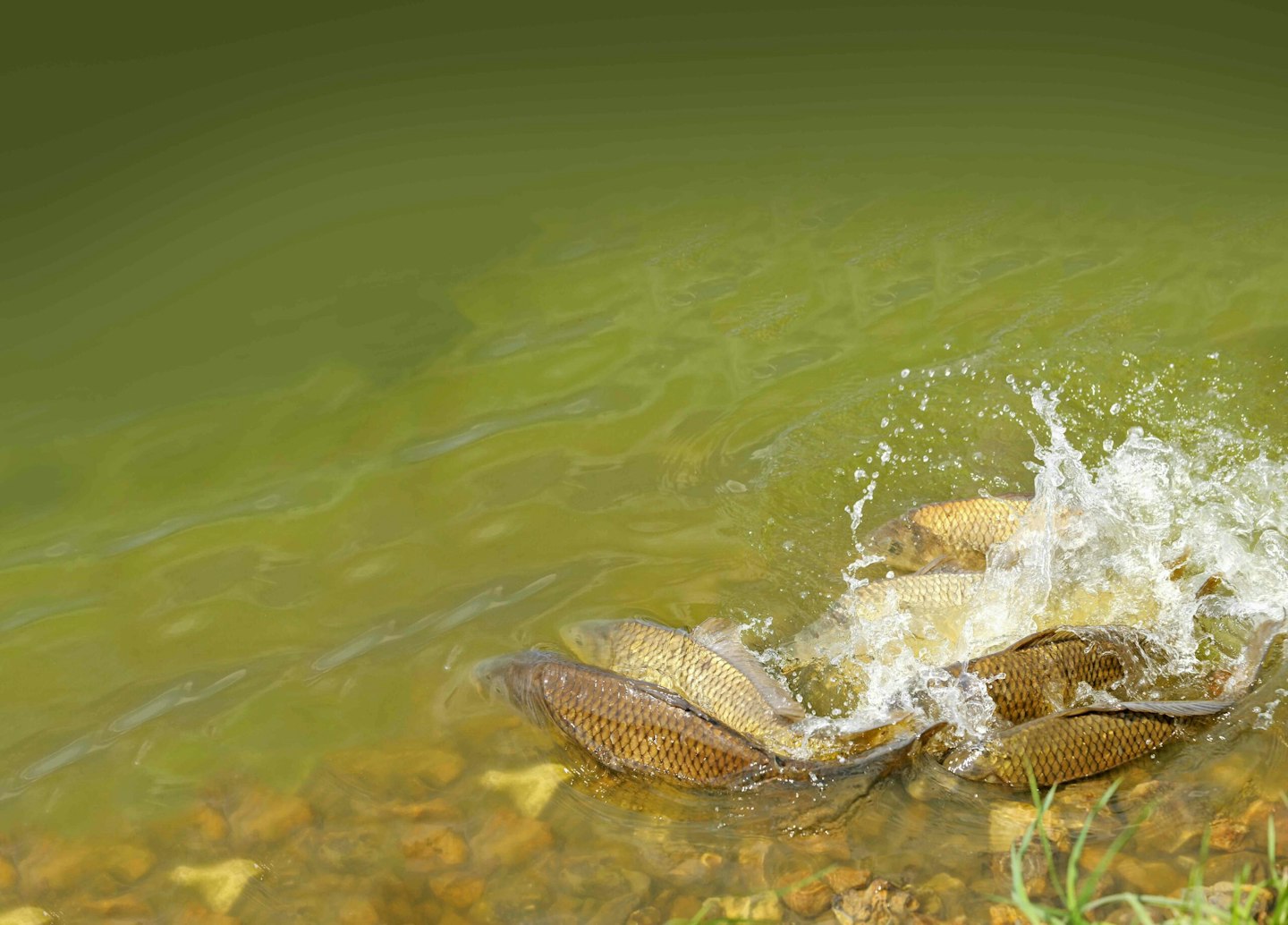
CARP, BREAM AND TENCH
Currently the species likely to be getting close to spawning are carp, bream and tench. The time they do this will vary from water to water, as it is entirely dependent on water temperature.
Some may have spawned already, others will be a long way off. So, it really is just about judging the situation from the behaviour of your target fish.
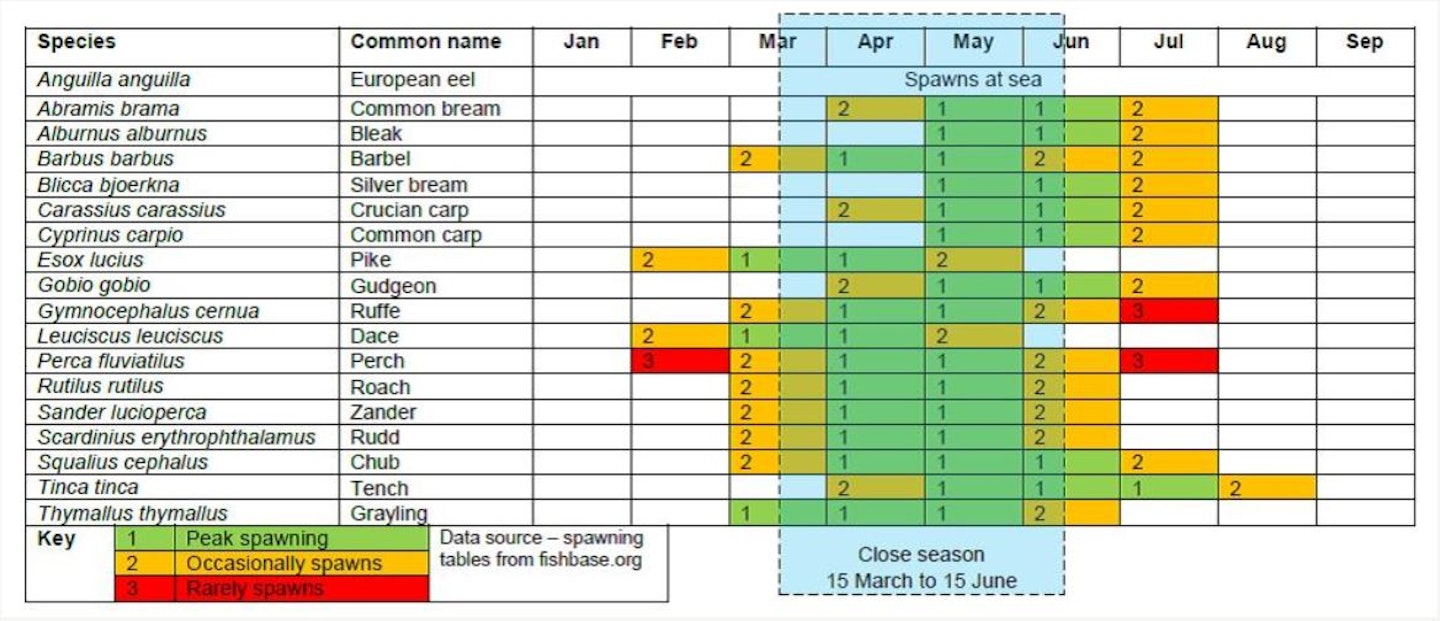
GROUPING TOGETHER
Many species are naturally shoaled together throughout the year. But in the coming months, look out for groups of fish following each other quickly through weedbeds, close to marginal reeds or in shallow areas of the lake.
What you will initially start to see, is smaller male fish following the female and nudging at her to release her eggs. They will then frantically be looking to get in line to fertilise these once she has released.
For this reason, you will find male fish are far more active early on. These will usually be smaller fish, with a different shape and profile to the females. Males will be longer and leaner than the females, and particularly with carp, will have massive fins. With tench this is also true, but a male tench can also be spotted by a protruding muscle on its flank.
Males at this time of year will fight like crazy, so bare this in mind when you are fishing. Look out for signs of other fish following the one you are attached to, this is a clear sign spawning is on their minds.

SPAWNING NODULES
Another good indicator that carp and bream are close to spawning, is spawning nodules. These are small lumps or spots on the fish, which will make the fish very rough to touch. These nodules will cover the head and pectoral fins but do not worry they aren’t causing the fish any harm.
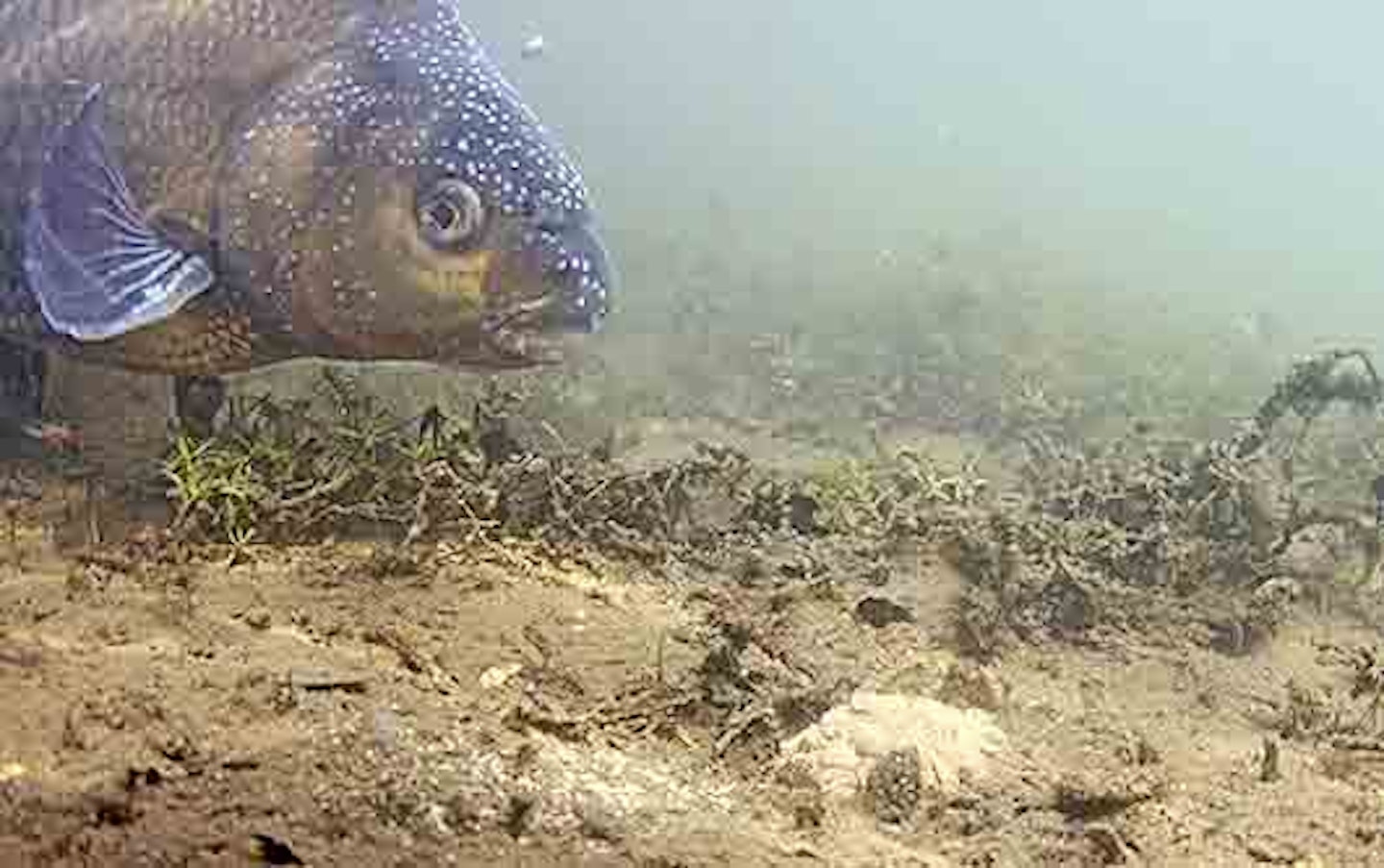
THRASHING
When the fish start spawning you will have no doubt about it. It is quite a spectacle to behold, particularly with carp. The fish will be thrashing through the weed and reeds at some pace, often obliterating everything in their path.
If you have lines in the water, you will get constant false runs, which may seem like screaming takes, until you strike into nothing.
The water will be churned to a mud bath pretty quickly too in some lakes. Take note of these trashed areas as it may not be caused by feeding fish like you first may think.
Carp will thrash through the weed when spawning
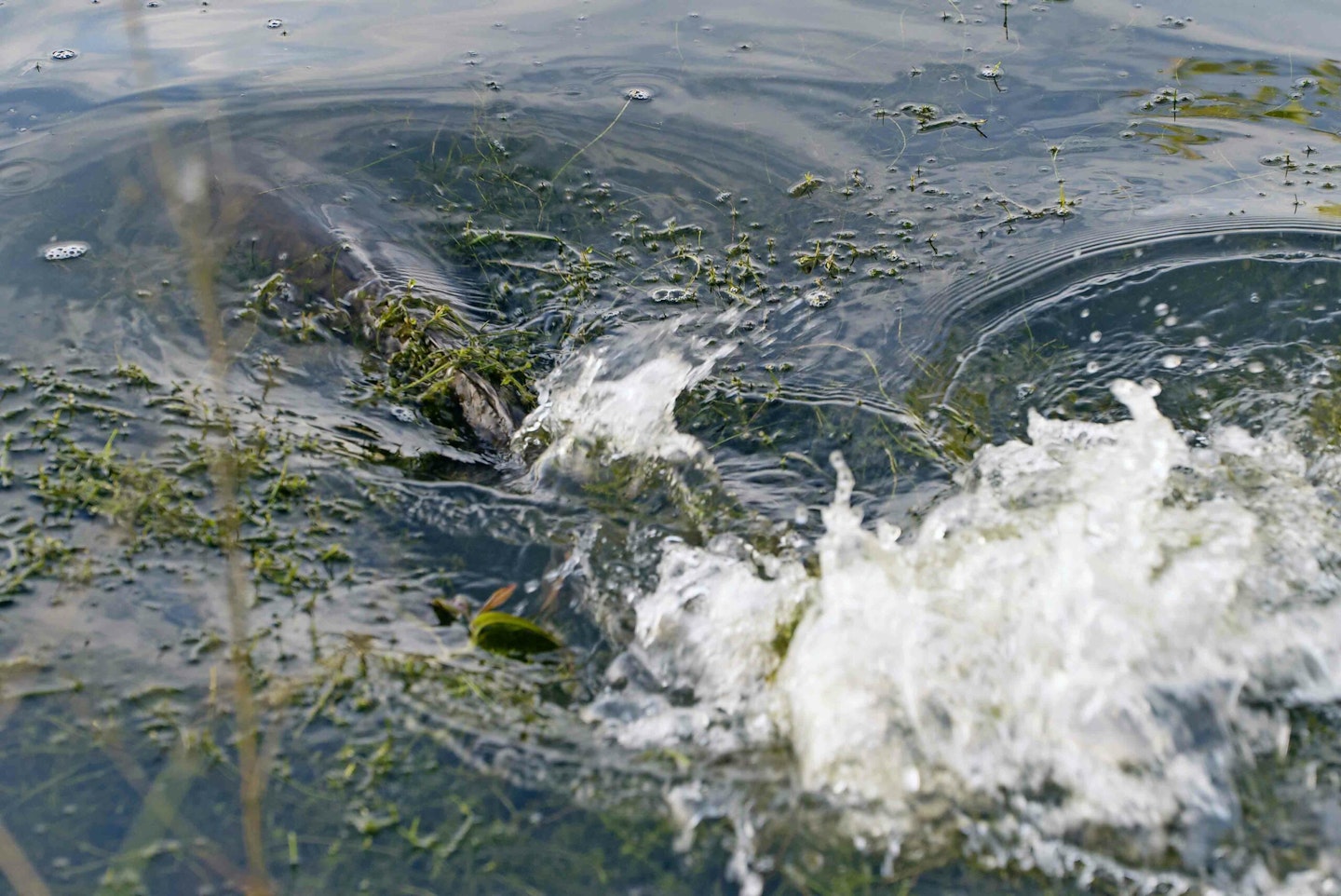
LET THEM REST
The vigorous spawning process can cause some damage to the fish as they thrash through the lakeside vegetation. Some unfortunately won’t even survive the process. It is therefore important to let the fish recover for a week or two once spawning is out the way.
If carp cannot release their eggs they can become spawn bound and die
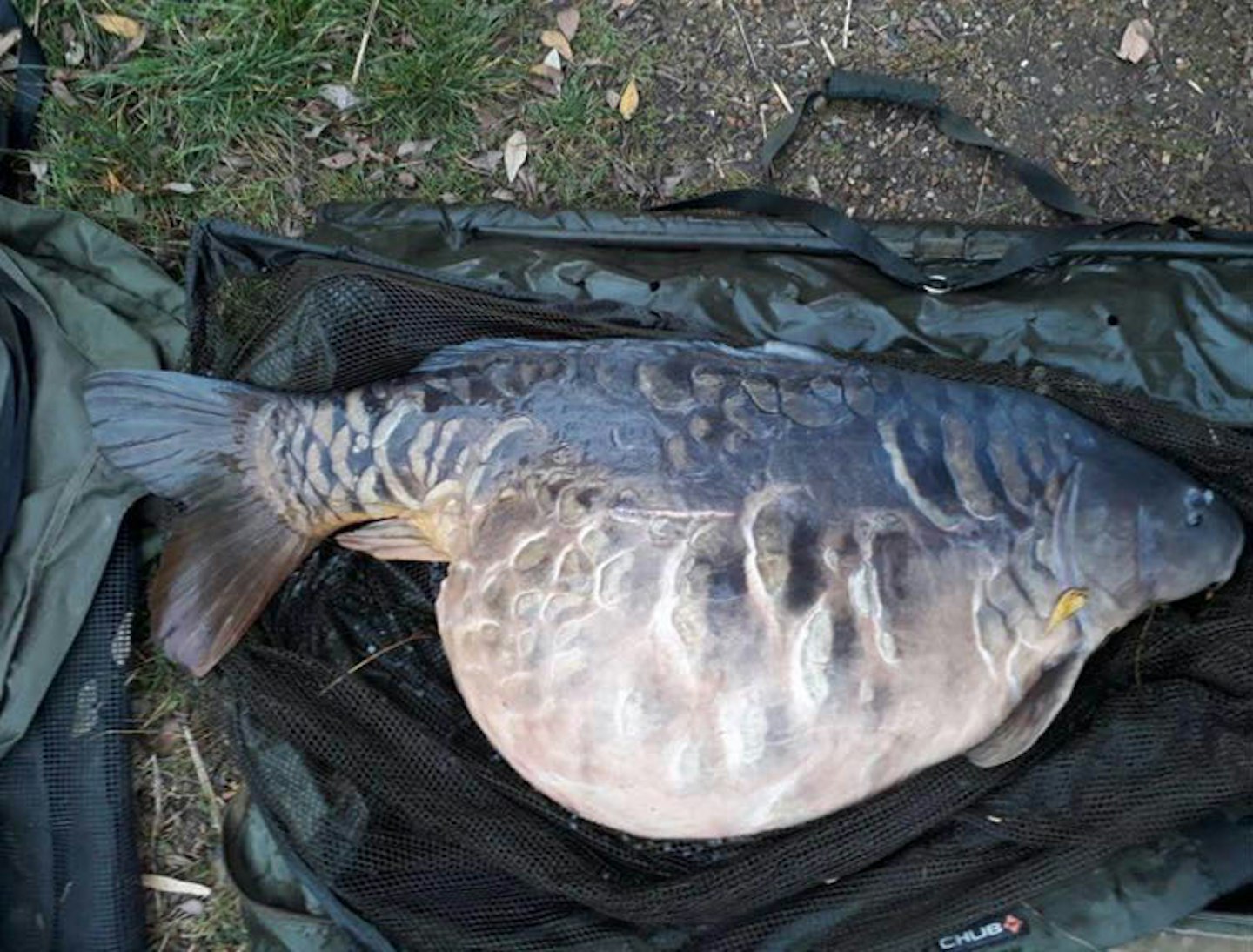
THEY MAY SPAWN MORE THAN ONCE
You may find that groups of fish on lakes around the country attempt the spawning process more that once. During these next few months, be prepared for them to start at any time and leave them to it when they do.
GET FISH SPOTTING
For carp anglers in particular, this is a great time of year to have a good look at the stock in your lake. Noted target fish will be easily visible in this period and you will get a good look at some of the less known characters too.
So, instead of an afternoon with the rods out, why not spend an afternoon watching the fish and let nature do its work?
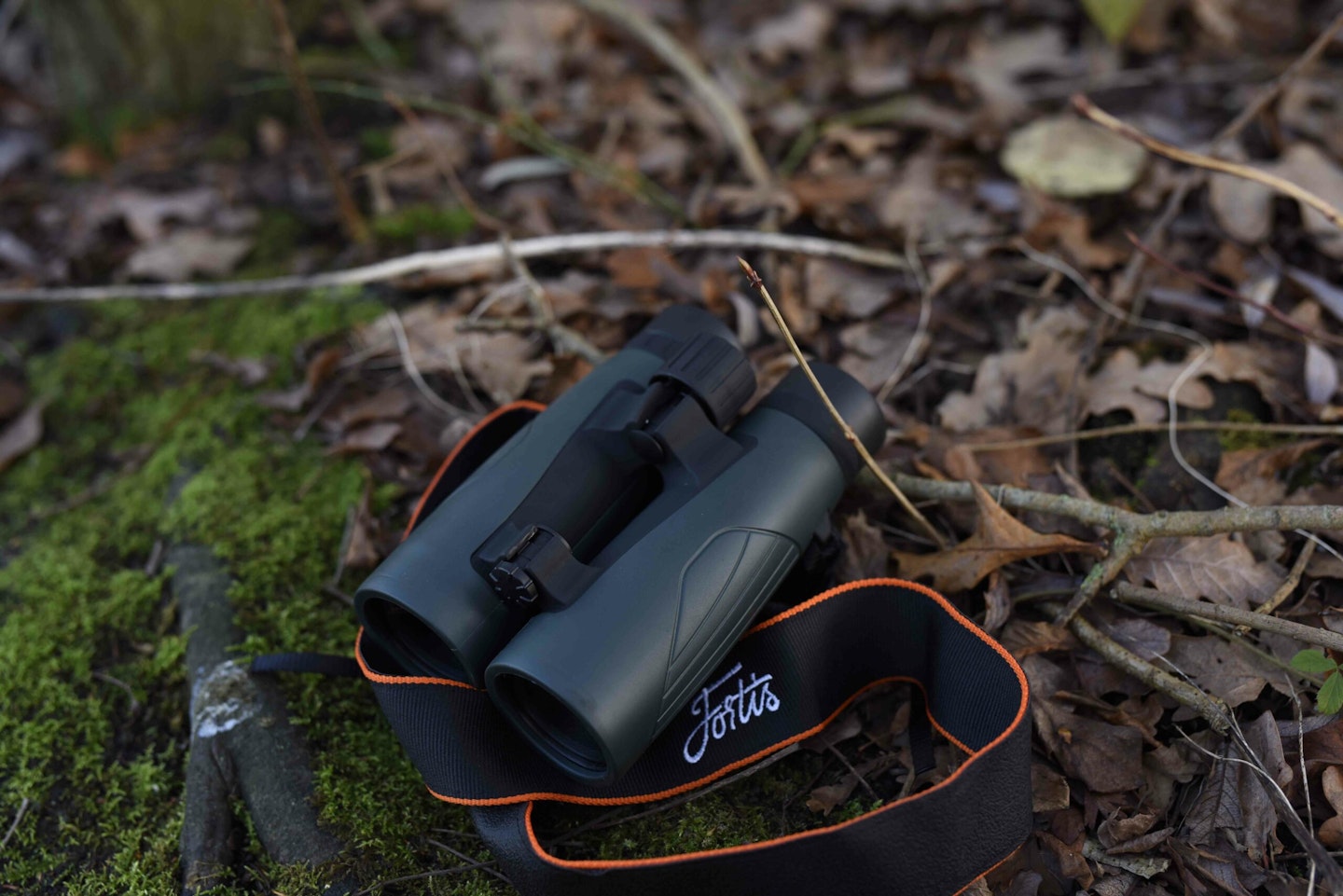
This page is a free example of the amazing content Angling Times Members get every single week. Becoming an Angling Times Member gives you access to award-winning magazine content, member rewards, our back issue archives, bonus content and more! Join our fishing community and find out more today!
